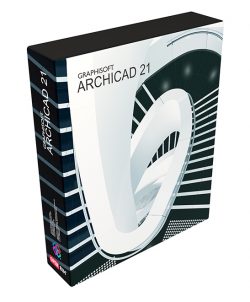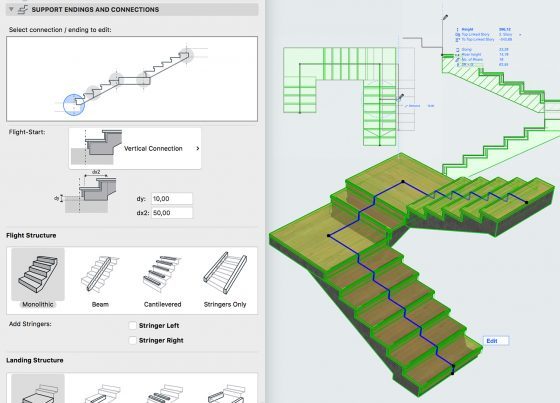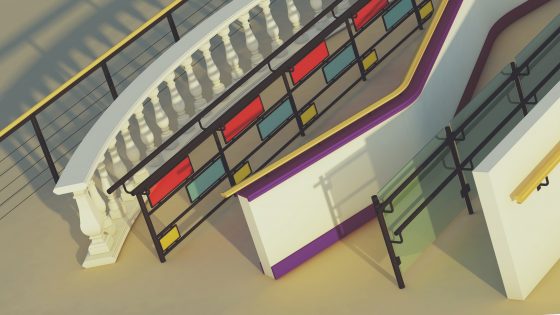Predictive Design Technology calculates design standards and ergonomics on the fly.
 The latest update to Graphisoft ArchiCAD BIM software for architectural design adds a new algorithmic tool for stair design. Graphisoft says the new Stair Tool features a patent-pending approach to stair design.
The latest update to Graphisoft ArchiCAD BIM software for architectural design adds a new algorithmic tool for stair design. Graphisoft says the new Stair Tool features a patent-pending approach to stair design.
Stair and railing design is complex; it must comply with stringent standards as well as architectural artistic intent. Often architects have to create several iterations, in a tedious, mostly manual workflow. The new Stair Tool in ArchiCAD 21 provides automatic validation against human ergonomics on the fly, validating thousands of design options in the background. The architect is offered the most optimal stair designs to choose from within the context of the specific building.

Stair Tool starts with the designer placing stairs with simple polyline input and choosing from various design options. If a problem can be solved in a variety of ways, the software offers a selection of the best options that fits both the user’s graphical input and the chosen standards. Graphical methods allow users to tweak the stair’s shape and to customize structural and finish components. The associated Railing Tool offers one-click input options to create an instant associative railing along stairs or other building elements. Posts and panels can be assigned as patterns, or customized individually.

Other new features in ArchiCAD 21 include:
Updated CineRender engine — CineRender by Maxon offers architects integrated, photorealistic rendering options within a BIM context. The latest version introduces Light Mapping and Secondary global illumination (GI) methods for more realistic, yet fast rendering.
Element Classification system — An ArchiCAD model can be described as a central BIM database that stores all project data and makes it accessible to any project stakeholder. While previous ArchiCAD versions provided a fixed set of Element Classifications, ArchiCAD 21 introduces a more flexible way to classify elements supporting any national or company-standard classification system. Classifications are core to intelligent Open BIM workflows, providing increased interoperability among disciplines. Classifications can be transferred between projects via XML file format.
IFC model referencing — IFC files can now be placed as hotlinks into ArchiCAD projects as protected reference content. Model Filtering narrows the inserted IFC reference content by categories, such as Structural or MEP, or by element selection. The inserted IFC model content can be updated from the linked source file. If the link is broken, elements of the inserted IFC modules can be edited as regular ArchiCAD elements.
Collision detection — With the evolution of BIM as the de facto workflow, architects increasingly receive consultant information in a BIM format. To help architects fulfill their role as lead coordinator of the model, Collision detection becomes a standard part of the feature set starting with ArchiCAD 21.
Graphisoft and Maxon are both subsidiaries of Nemetschek, a holding company with a variety of products for architectural design, structural engineering, construction, and digital content creation.





